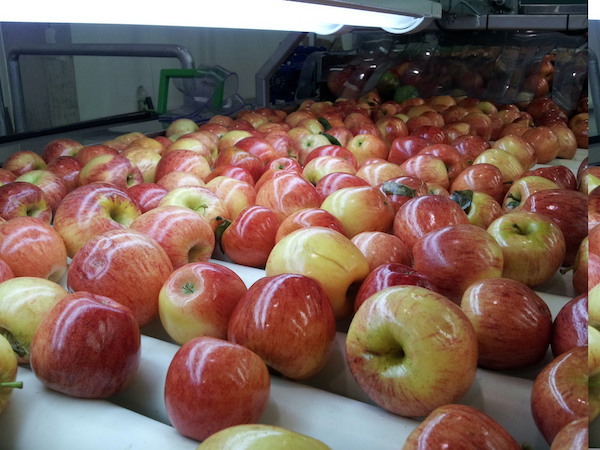Last century, some companies around the world dedicated science to improving the quality of fruit with coatings of controlled permeability. Enhancing appearance, reducing water loss and maintaining shelf-life were the main preoccupations of the market back then. But now, aesthetics have become secondary.
“Developing coating products is regulated by a well-defined list of ingredients authorized within the European Union as well as other countries. Xeda International has been using this list in order to make the most of the ingredients essential for the development of a coating that takes into account the different fruit metabolisms,” explains Alberto Sardo, president of Xeda International.

Each fruit has its own evolution in preservation
Apples, peaches, oranges, avocados and even pears...each fruit evolves differently on the shelves. “We note that the substances that help maintain the firmness of the fruits over time act as a barrier to the weight lost by the fruits. What coating waxes do is find the perfect blend between the different combinations of substances, the formula used to produce the coating as well as its uniformity. Overall, coatings of natural and synthetic wax are very impermeable to water and very permeable to oxygen and carbon dioxide. Coatings with a high resin content, on the other hand, have low gas permeability. The consequence is obvious: apples, whose metabolism is low, can take a wax with high resin concentration. For oranges and pears, on the contrary, this would result in asphyxiation and alcoholic fermentation. The fruits can then taste bad and need to be destroyed.”
Products banned in Europe, although still present on the market
According to Alberto Sardo, the appearance of new actors on the coating market highlights a clear lack of knowledge on these issues. “The fruits are no longer treated according to their characteristics, their metabolisms but according to their aesthetic qualities in spite of taste or with a unique product for all purposes. For example, polyvinyl alcohol, which is prohibited in Europe, stops the supply of oxygen which can cause the fruit to asphyxiate. In spite of this, this coating has recently been proposed to users. Other products are suggested as fake miracle solutions, and their marketing often does not comply with the European food law which requires that all ingredients the finished product is made of be listed in order of decreasing concentration. We find ourselves in the presence of wannabe sorcerers who offer products on the market for profit instead of in the interest of their clients who struggle to improve the quality of their fruits. Humanity, which came out of the myth to reach science, goes through this vision of science to the myth.”

A global challenge: reducing food waste
In order to protect the fruit and reduce losses, it is important to take into account not only their metabolism but also the cultivation context, their variety, storage, ripening stage and climate. “Xeda International, like other responsible companies, uses the complexity of science in order to serve a cause that goes beyond market economics: reducing food waste and therefore contributing to feeding the growing population. Coating products are often associated with treatments that can eliminate fungal, bacterial or physiological losses. These associations can be done through separate applications or by mixing directly with the coating products.”
“The approach is all the more interesting that agriculture represents more than a third of greenhouse gas emissions. Between 30 and 40% of the food is lost between harvest and consumption. Treating the fruit by respecting their conditions, thus dividing the losses in half, would help reduce arable soil by at least 15%. This crop reduction would represent a gain of various treatments for producers, the possibility of reducing the state of famine of certain populations, a healthier soil, and therefore a reduction of greenhouse gases. This objective can be achieved by using an adapted physiological protection treatment (coating) coupled with a fungicidal, bactericidal, antioxidant or germicidal treatment.”
For more information:
Xeda International
Phone: 04 90 90 23 23
info@xeda.com
